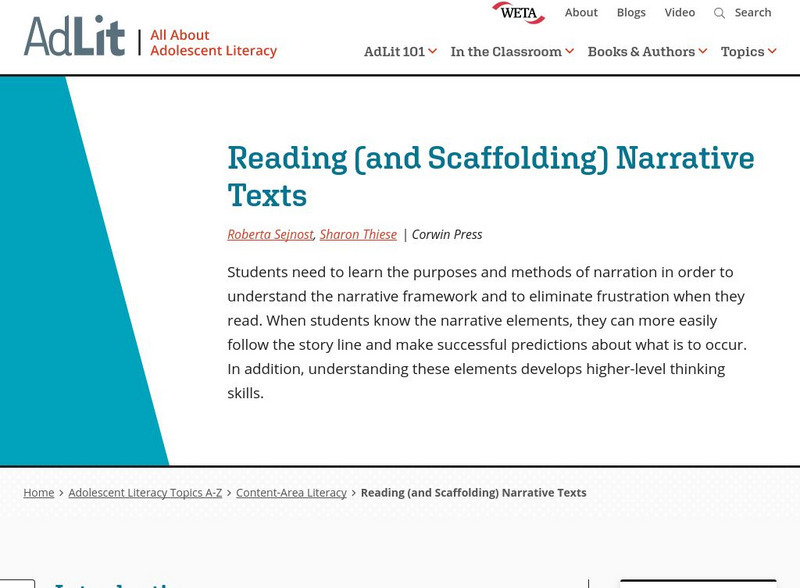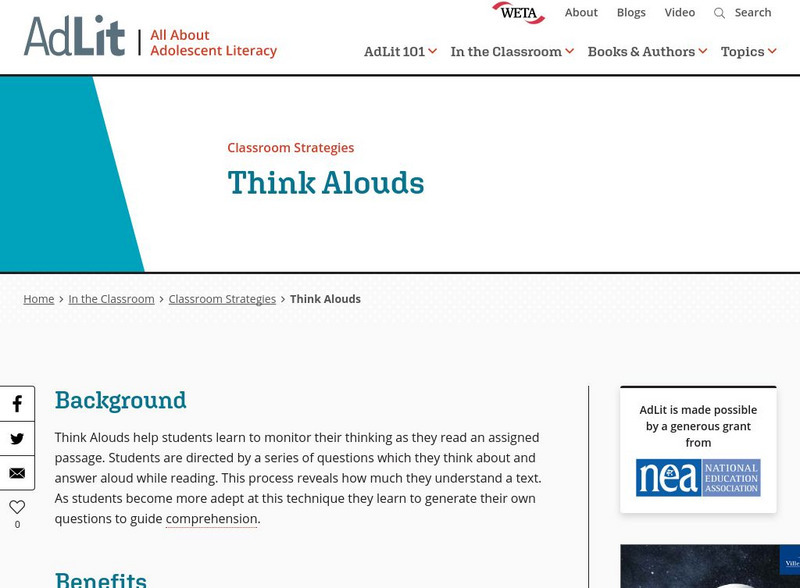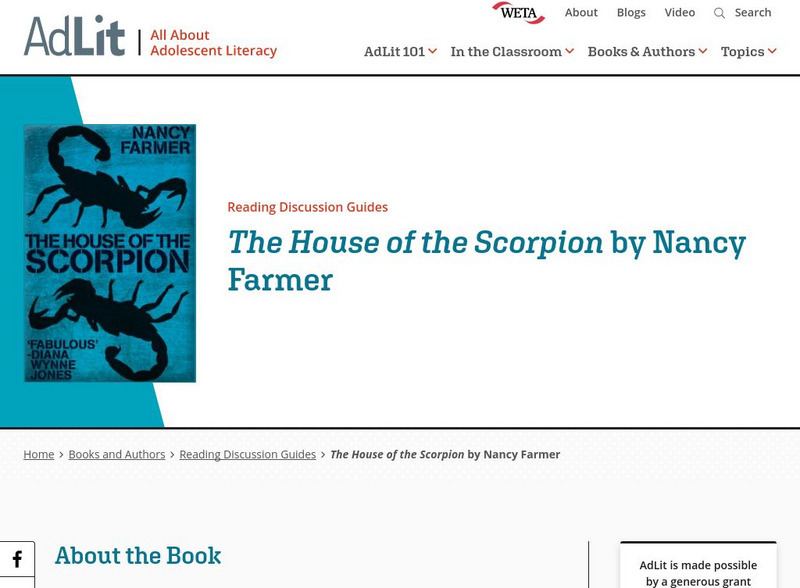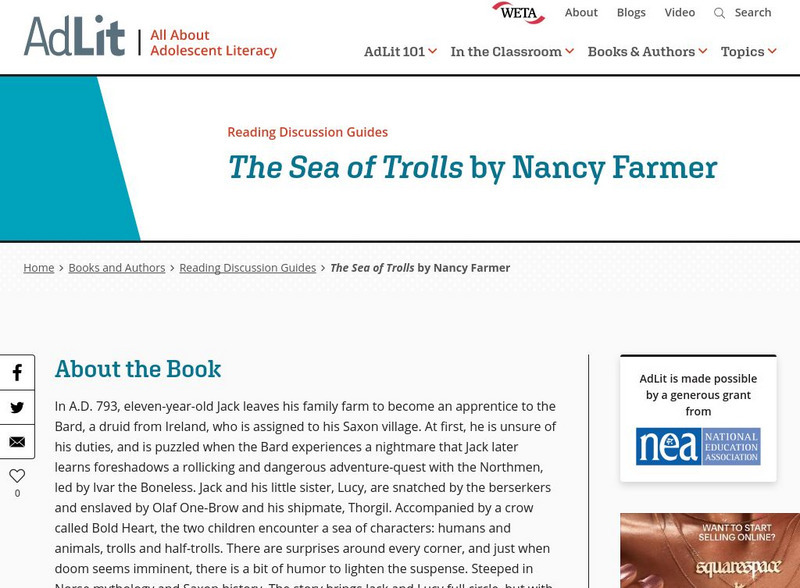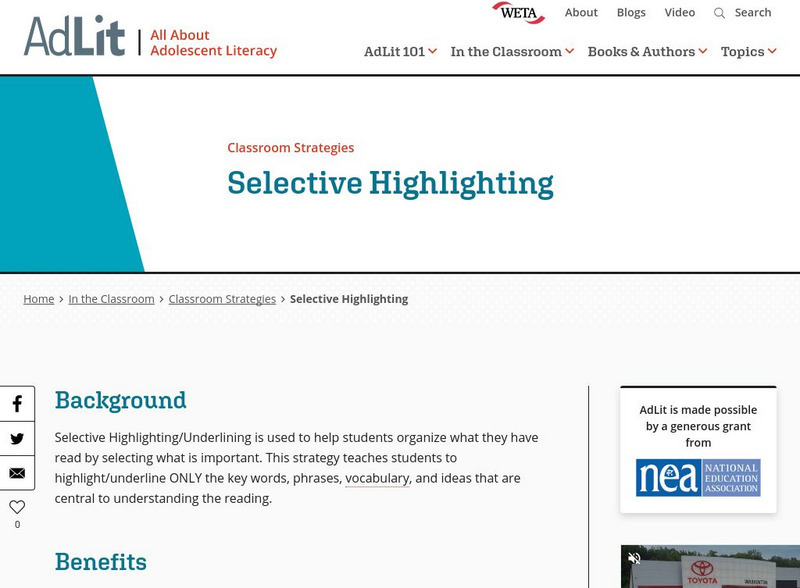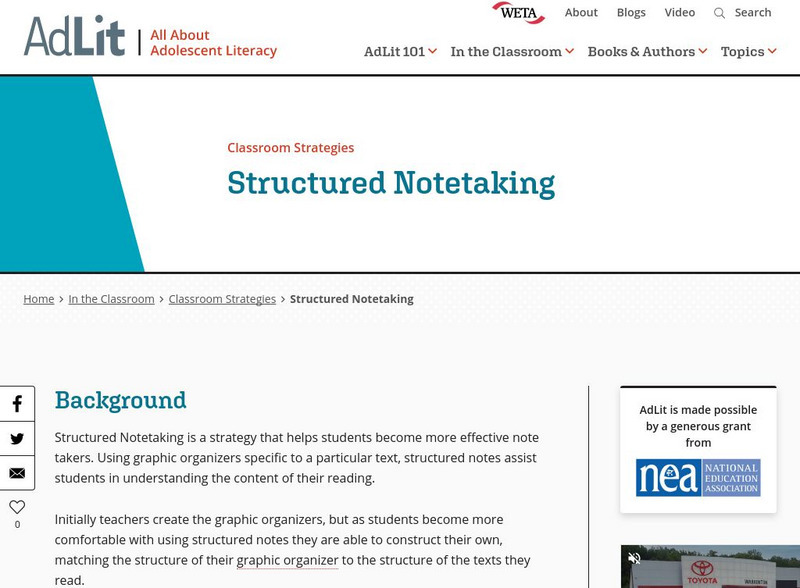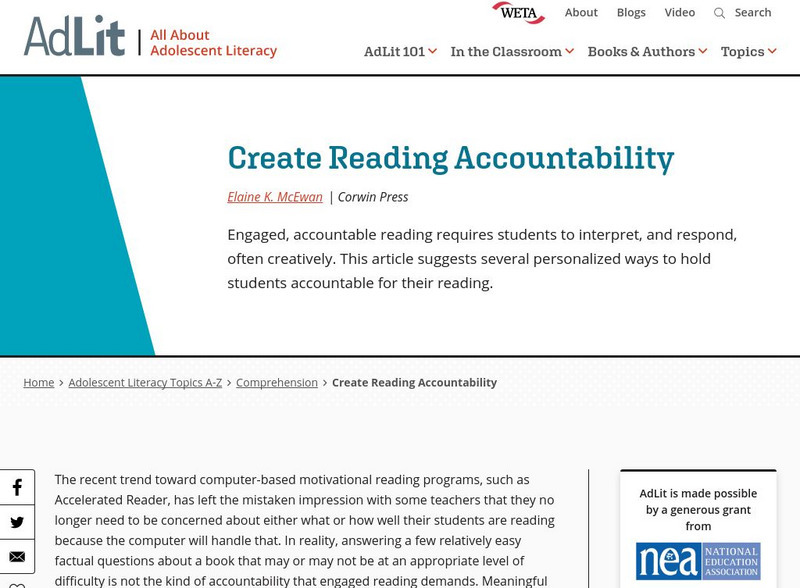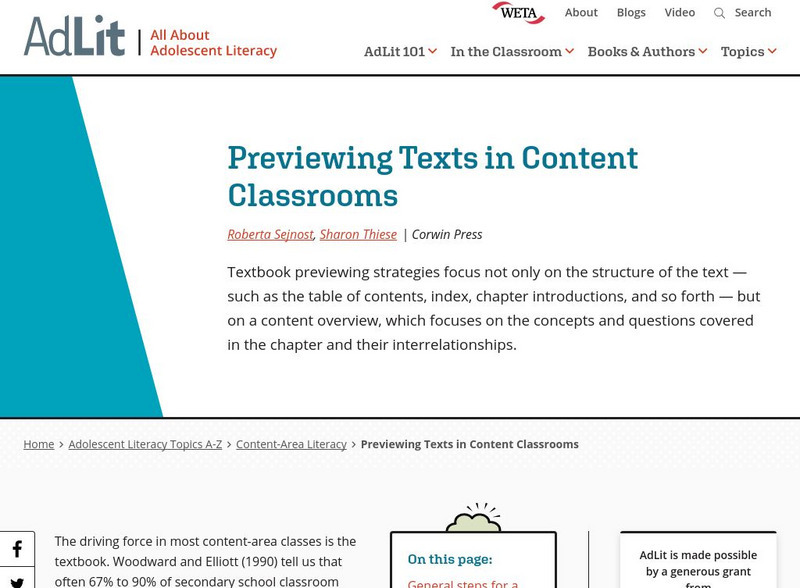AdLit
Ad lit.org: Reading (And Scaffolding) Narrative Texts
Students need to learn the purposes and methods of narration in order to understand the narrative framework and to eliminate frustration when they read. When students know the narrative elements, they can more easily follow the story...
AdLit
Ad lit.org: Classroom Strategies: Think Alouds
Think Alouds help students learn to monitor their thinking as they read an assigned passage. Students are directed by a series of questions which they think about and answer aloud while reading. This process reveals how much they...
AdLit
Ad lit.org: Why Students Think They Understand When They Don't
Students often think they understand a body of material and, believing that they know it, stop trying to learn more. But come test time, it turns out they really don't know the material very well at all. Can cognitive science tell us...
AdLit
Ad lit.org: Classroom Strategies: Double Entry Journals
The Double-Entry Journal strategy enables students to record their responses to text as they read. Students write down phrases or sentences from their assigned reading and then write their own reaction to that passage. The purpose of...
AdLit
Ad lit.org: Classroom Strategies: Monitoring/clarifying
The Monitoring/Clarifying strategy teaches students to recognize when they don't understand parts of a text and to take necessary steps to restore meaning. This technique is a component of the Reciprocal Teaching model in which teachers...
AdLit
Ad lit.org: Classroom Strategies: Paired Reading
The Paired Reading strategy encourages peer teaching and learning. Students are divided into pairs and read along together or take turns reading aloud to each other. Pairs can have the same reading ability or can include a more fluent...
AdLit
Ad lit.org: Classroom Strategies: Paragraph Shrinking
Paragraph Shrinking is an activity developed as part of the Peer-Assisted Learning Strategies (PALS). PALS is a classwide peer tutoring program in which teachers carefully partner a student with a classmate. The Paragraph Shrinking...
AdLit
Ad lit.org: Reading Discussion Guide: A Troubled Peace by l.m. Elliott
A Troubled Peace, the sequel to L. M. Elliott's award-winning Under a War-Torn Sky, chronicles nineteen-year-old U.S. Air Force pilot Henry Forester's adventures in France from March through July 1945. Although Henry safely returned from...
AdLit
Ad lit.org: Reading Discussion Guide: The House of the Scorpion by Nancy Farmer
Matt is a clone of El Patron, a powerful drug lord of the land of Opium, located between the United States and Mexico. For six years, he has lived in a tiny cottage in the poppy fields with Celia, a kind and deeply religious servant...
AdLit
Ad lit.org: Reading Discussion Guide: The Sea of Trolls by Nancy Farmer
In A.D. 793, eleven-year-old Jack leaves his family farm to become an apprentice to the Bard, a druid from Ireland, who is assigned to his Saxon village. At first, he is unsure of his duties, and is puzzled when the Bard experiences a...
AdLit
Ad lit.org: Reading Discussion Guide: Weedflower by Cynthia Kadohata
Twelve-year-old Sumiko feels her life has been made up of two parts: before Pearl Harbor and after it. The good part and the bad part. Raised on a flower farm in California, Sumiko is used to being the only Japanese girl in her class....
AdLit
Ad lit.org: Classroom Strategies: Think Pair Share
Think-Pair-Share (TPS) is a collaborative learning strategy in which students work together to solve a problem or answer a question about an assigned reading. This technique requires students to (1) think individually about a topic or...
AdLit
Ad lit.org: Classroom Strategies: Reciprocal Teaching
Reciprocal Teaching is a strategy that asks students and teachers to share the role of teacher by allowing both to lead the discussion about a given reading. Reciprocal Teaching involves four strategies that guide the discussion:...
AdLit
Ad lit.org: Classroom Strategies: Selective Highlighting
Selective Highlighting/Underlining is used to help students organize what they have read by selecting what is important. This strategy teaches students to highlight/underline ONLY the key words, phrases, vocabulary, and ideas that are...
AdLit
Ad lit.org: Classroom Strategies: Semantic Feature Analysis
The Semantic Feature Analysis strategy engages students in reading assignments by asking them to relate selected vocabulary to key features of the text. This technique uses a matrix to help students discover how one set of things is...
AdLit
Ad lit.org: Classroom Strategies: Story Maps
Story Maps are used for teaching students to work with story structure for better comprehension. This technique uses visual representations to help students organize important elements of a story. Students learn to summarize the main...
AdLit
Ad lit.org: Classroom Strategies: Structured Notetaking
Structured Notetaking is a strategy that helps students become more effective note takers. Using graphic organizers specific to a particular text, structured notes assist students in understanding the content of their reading.
AdLit
Ad lit.org: Classroom Strategies: Sq3 R: Survey Question Read Recite Review
SQ3R is a comprehension strategy that helps students think about the text they are reading while they're reading. Often categorized as a study strategy, SQ3R helps students "get it" the first time they read a text by teaching students...
AdLit
Ad lit.org: Classroom Strategies: Word Hunts
Word Hunts are used to enhance students' vocabulary growth. Teachers ask students to look for words and patterns in reading materials based upon selected features. Word Hunts focus on the structure and meaning of words by turning...
AdLit
Ad lit.org: Classroom Strategies: Question the Author (Qt A)
Question the Author (QtA) is a comprehension strategy that requires students to pose queries while reading the text in order to challenge their understanding and solidify their knowledge (Beck et al., 1997).
AdLit
Ad lit.org: Classroom Strategies: Question Answer Relationship (Qar)
Question-Answer relationship (QAR) is a strategy to be used after students have read. QAR teaches students how to decipher what types of questions they are being asked and where to find the answers to them. Four types of questions are...
AdLit
Ad lit.org: Classroom Strategies: Raft Writing
RAFT is a writing strategy that helps students understand their role as a writer, the audience they will address, the varied formats for writing, and the topic they'll be writing about. By using this strategy, teachers encourage students...
AdLit
Ad lit.org: Create Reading Accountability
Engaged, accountable reading requires students to interpret, and respond, often creatively. This article suggests several personalized ways to hold students accountable for their reading.
AdLit
Ad lit.org: Previewing Texts in Content Classrooms
Textbook previewing strategies focus not only on the structure of the text - such as the table of contents, index, chapter introductions, and so forth - but on a content overview, which focuses on the concepts and questions covered in...


